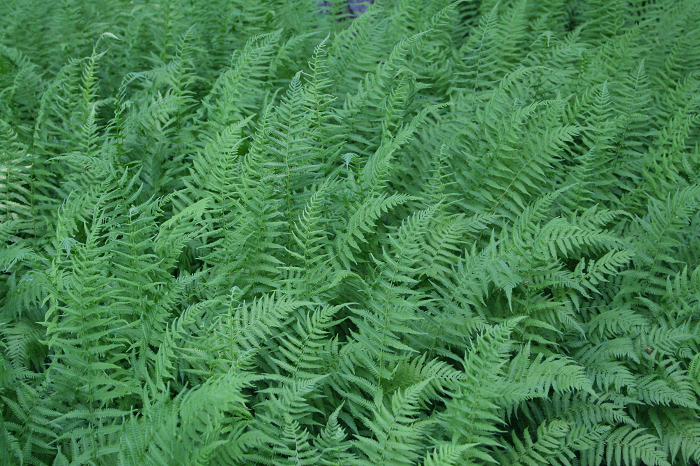General Description
Bloom Description: No flowers, fine texture, nice yellow fall color.
Growth Habit & Shape: Parathelypteris has fine textured pinnae and the frond is characterized as narrow at both end or "burning the candle at both ends". This distinctive feature makes Parathelypteris noveboracensis easy to identify. Not necessarily a great choice for the garden due to its more aggressive growth habit.
Soil Preferences: Prefers moist to drier upland soils. Tolerant of a wide variety of soil conditions.
Root Description: This fern has a short-creeping rhizome which is thin, black and wirey. It spreads quickly forming mats in the soil.
Garden Uses: New York fern can be used as a ground cover under taller perennials and is great for naturlizing along the edges of garden areas. Also a great plant for difficult areas it is tolerant of the drier soils found under maples or problem areas of the landscape. Not a specimen, but beautiful in mass plantings.
Best Management & Maintenance: Parathelypteris noveboracensis grows well in dapped to full shade locations. It is commonly found in the forest understory where it can carpet the forest floor. It can hold its own against large perennials such as Actaea and Caulophyllum, but may be too aggressive for small spring ephemerals. Nice when interplanted with species of about the same height but you may need to remove plants once it starts to overtake more desirable species.
Common Problems: none.
Benefits
Ornamental Value: The fern turns a lovely yellow in the fall when it recieves some sunlight.
Wildlife Benefits: Provides cover for toads. Deer resistant.
Other Practical/Environmental Benefits: Great plant for stabilization of newly disturbed forest floor areas. It will fill in readily after a timber harvest and stabilize the soil.
Use in place of: Vinca
Ecology
Habitat:
Terrestrial in moist woods, especially near swamps, streams, and in vernal seeps of ravines, often in slightly disturbed secondary forests, frequently forming large colonies.
Response to Disturbance: Tolerates disturbances and resists deer browse. Good at stabilizing the soil in dry, shaded locations.
Native State Distributions:
Canada: St. Pierre and Miquelon; N.B., Nfld., N.S., Ont., P.E.I., Que.
USA: AL, AK, CT, DE, D.C., GA, IL, IN, KY, LA, ME, MD, MA, MI, MS, NH, NJ, NY, NC, OH, OK, PA, RI, SC, TN, VT, VA, WV
Wetland indicator status: FAC
Companion Plants:
Actaea sp., Caulophyllum thalictroides, Stylophorum diphyllum, Mertensia virginica.
References
Return to Top

